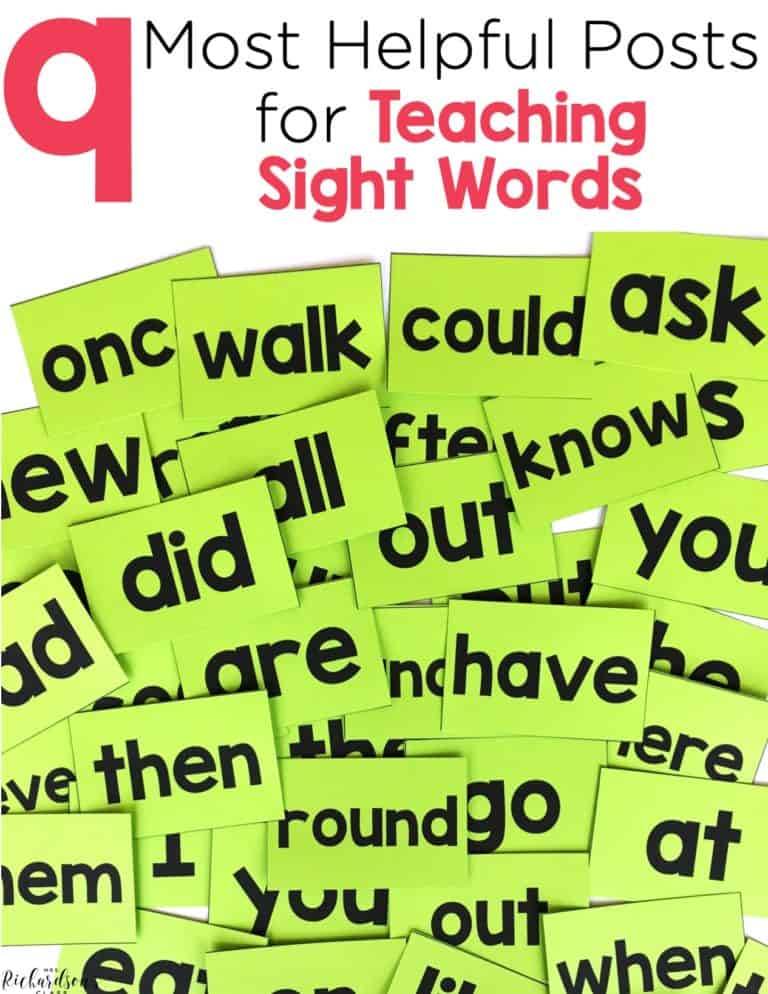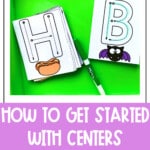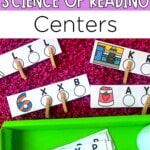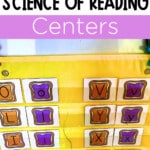

As a kindergarten, first, or second-grade teacher, the concept of getting started with science of reading literacy centers may initially seem overwhelming. This is especially true at the beginning of the year when you are still trying to establish routines and procedures for success. But I’m here to help!
With a clear understanding of the science of reading and a well-structured approach to starting science of reading literacy centers, you can implement engaging, purposeful centers that empower your young learners. In this blog post, we’ll delve into the world of science of reading literacy centers, explore the materials needed, highlight their benefits, and show you how to get started.
One of the biggest reasons to include science of reading literacy centers in your reading block is for easy differentiation and reinforcing important concepts.
Differentiating literacy centers can benefit both struggling and advanced students. For struggling students, it can provide them with activities that match their abilities, making learning more accessible and less overwhelming. For advanced students, it can challenge them and prevent them from getting bored or disengaged.
Do you need to differentiate every single center? Not necessarily. Some centers will naturally lend themselves to differentiation based on a student’s phonics, reading, and writing skills. For example, in a writing center, students will do what they are capable of.
In a listening center, students will listen, comprehend, and respond to a text in a way that they are capable of. Some students may only be drawing responses with some labels. Some students may write short sentences. Other students may have a more in-depth analysis of a book they listened to.
You can read more about differentiating literacy centers HERE! I also have a bundle of done-for-you science of reading centers so you don’t even have to think about planning. Just download, print, and be done. Get them here!
When it comes to getting started with science of reading literacy centers, there are a lot of moving pieces to consider. Here are some things to think about and plan for when getting started
When you’re beginning literacy centers, you’ll want to know your students’ current reading abilities and identify their specific areas of strength and improvement. Not every center will be based on current abilities, but some will be, and you’ll want to know where to start your students. Grab a free assessment tool HERE.
Each center should have clear learning goals. Be sure to choose to implement centers that will benefit your students, are appropriate for your students’ skills, and are purposeful. We want each center to be meaningful and accomplish a learning goal for your students.
When you think about your centers, what do you want them to look like? Do you want to rotate each week? Do you want students to learn a new game each week? How long do you want students to be in each center? How many students do you want in each center group? Make yourself a list of what you want in your centers and what you don’t want in your centers.
I personally wanted students to rotate with structure after 15-20 minutes. I also wanted to include games, but I didn’t want to teach students how to play a new game every week. Additionally, I wanted games with a consistent structure, but a new skill to practice each week.
Then, make a list of centers you’d like to include. Here are some ideas for literacy centers: listening, buddy reading, independent reading, word work, big book, poetry, computer/ipad, writing, pocket chart, puzzles, clip cards, color by a skill, and games.
Establish a rotation schedule to provide each student with the opportunity to engage with different centers. You’ll want to come up with a rotation system that works for you and your students. You could group students and have them rotate as a group. You can group students together, but let them move forward at their own pace.
I have found for kindergarten through second grade, about 15-20 minutes per center is about the right time. They get their work completed, but they don’t get bored and off-task yet.
One big thing I love to remind teachers of is that there will be adjustments. Even if you use the same successful format for centers as the previous year, it may not work as well for your current group. If you start to feel frustrated with your center time, take a moment to reflect on what’s working and what isn’t and make adjustments.
Are you looking to start literacy centers or stations as part of your structured literacy block, but don’t know how? Do you want to make sure your students are engaged in meaningful literacy centers while you do small group instruction? I have the perfect resource for you: A Guide to Introducing Literacy Centers. This guide was written to explain how to set up my stations that have been successful in my classroom for many years!
Each station has directions on how to get started, what it looks like as the year goes on, organization tools, and much more! I’ll show you exactly how to launch each station with success. No more guesswork and having the stress of figuring out what to do and when. You’ll feel confident knowing exactly what to do!
pin it

Want to use the latest research to boost your readers during small groups? This FREE guide is packed with engaging ideas to help them grow!

I’m a K-1 teacher who is passionate about making lessons your students love and that are easy to implement for teachers. Helping teachers like you navigate their way through their literacy block brings me great joy. I am a lifelong learner who loves staying on top of current literacy learning and practices. Here, you’ll find the tools you need to move your K-2 students forward!


| Cookie | Duration | Description |
|---|---|---|
| cookielawinfo-checkbox-analytics | 11 months | This cookie is set by GDPR Cookie Consent plugin. The cookie is used to store the user consent for the cookies in the category "Analytics". |
| cookielawinfo-checkbox-functional | 11 months | The cookie is set by GDPR cookie consent to record the user consent for the cookies in the category "Functional". |
| cookielawinfo-checkbox-necessary | 11 months | This cookie is set by GDPR Cookie Consent plugin. The cookies is used to store the user consent for the cookies in the category "Necessary". |
| cookielawinfo-checkbox-others | 11 months | This cookie is set by GDPR Cookie Consent plugin. The cookie is used to store the user consent for the cookies in the category "Other. |
| cookielawinfo-checkbox-performance | 11 months | This cookie is set by GDPR Cookie Consent plugin. The cookie is used to store the user consent for the cookies in the category "Performance". |
| viewed_cookie_policy | 11 months | The cookie is set by the GDPR Cookie Consent plugin and is used to store whether or not user has consented to the use of cookies. It does not store any personal data. |


